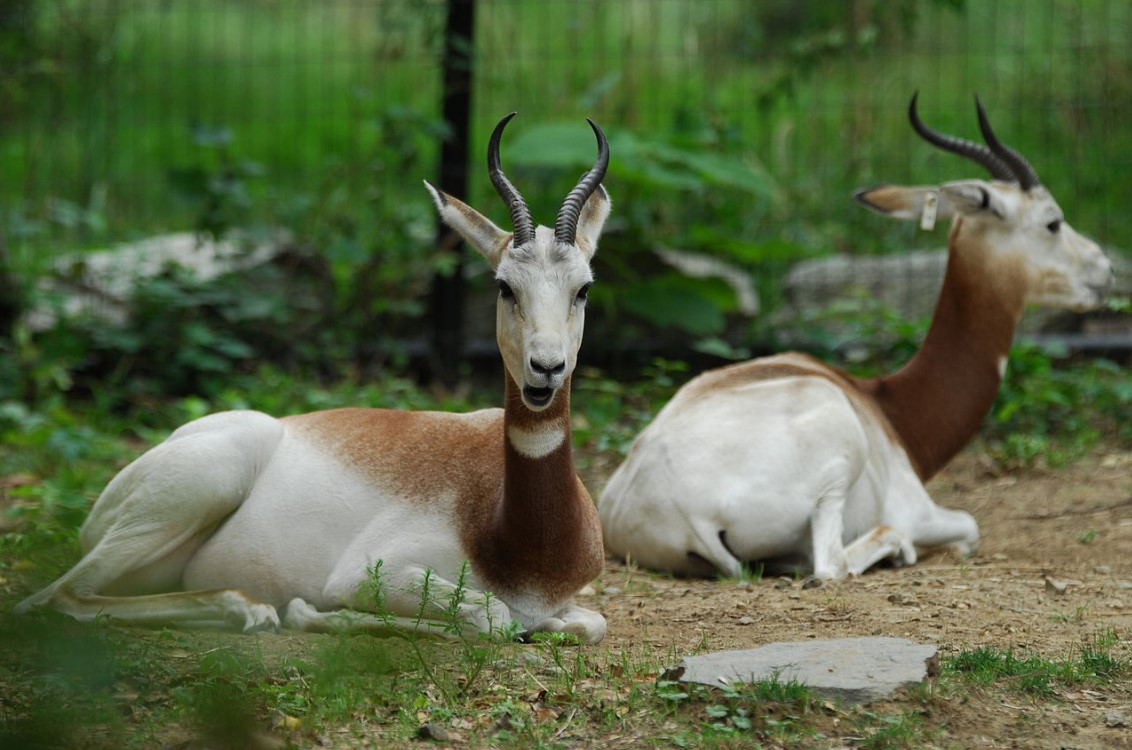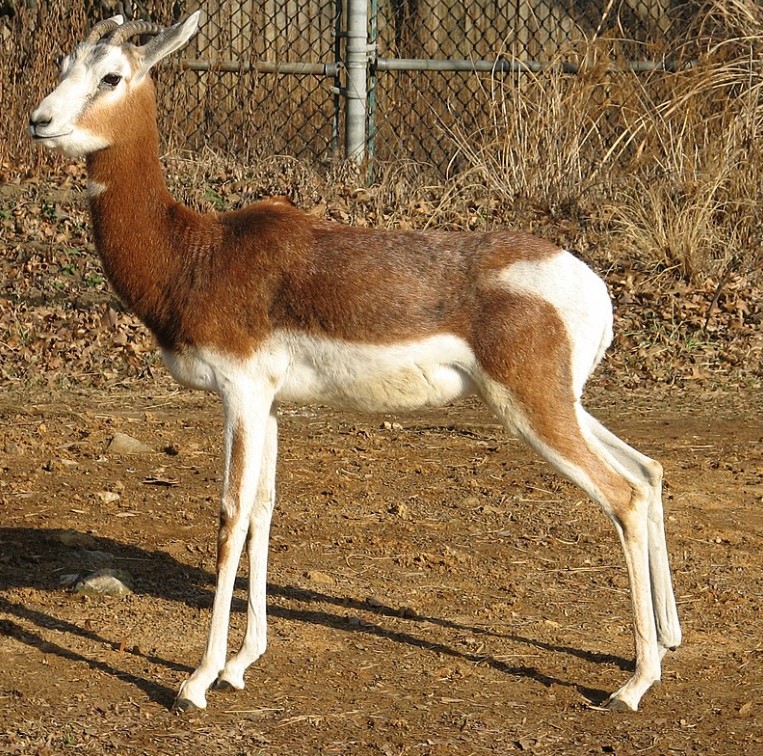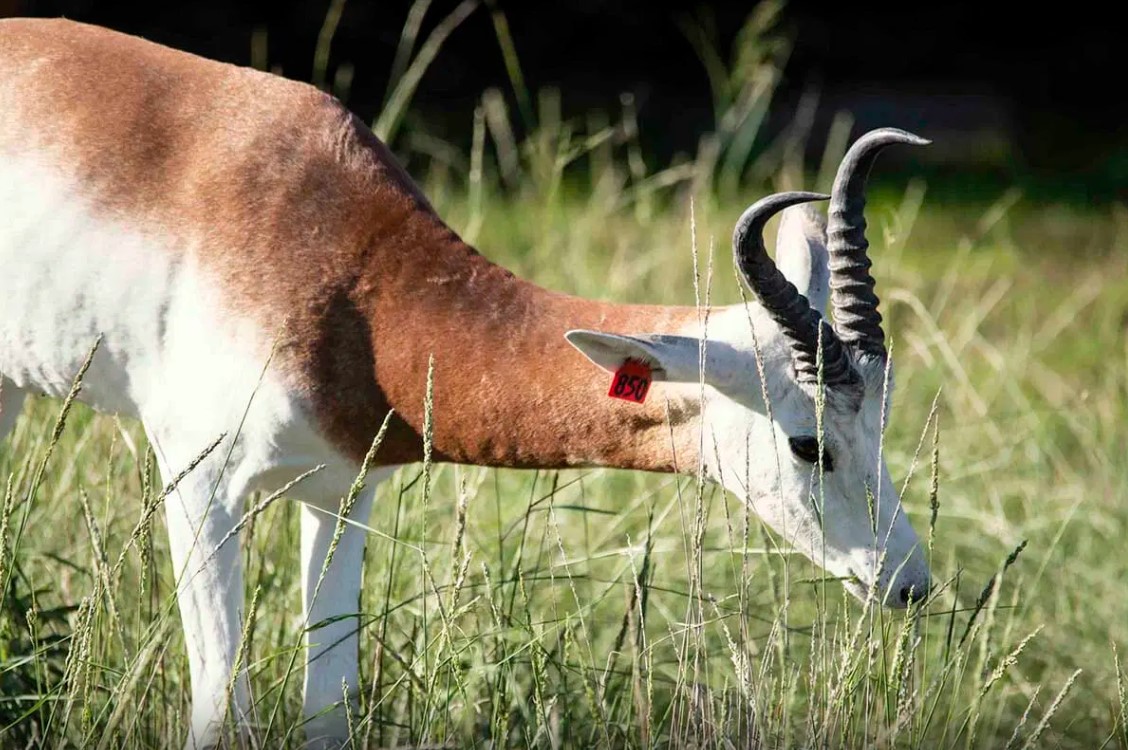





The dama gazelle(Nanger dama) is a species of gazelle that lives in the Sahara Desert and lost its former range, which included the desert and arid zones of Chad, and the Darfur and Kordofan Provinces of Sudan, due to habitat loss and overhunting. This species is also called the addra gazelle or the mhorr gazelle. They mostly live in the semi-deserts, grasslands, and shrublands of North Africa. There are three subspecies: Nanger dama dama, the nominate subspecies and very rare, Nanger dama ruficollis, the addra gazelle, and Nanger dama mhorr, the mhorr gazelle. The mhorr and addra gazelle are in captive breeding programs in Europe, North America, and the Middle East while the nominate subspecies are mostly kept at Al Ain Zoo in the United Arab Emirates(UAE).
Dama gazelles are the largest of the gazelle species. Dama are mostly white, topped with orange-brown hair covering their neck and most of their back. The head is small with a narrow muzzle, and the eyes are relatively large. It has a longer neck and longer legs than most gazelles. The long legs help these animals provide extra surface area to dissipate heat which is one of the many ways it stays cool in its hot desert environment. Both males and females have horns. They curve back and up but reach only about 17 inches long. The male's horns have 18 to 23 distinct rings and smooth tips while the females are typically smaller, and the rings less distinct. The addra gazelle is lightest in coloration and the most eastern subspecies of the three.
Unlike many other desert mammals, the dama gazelle is a diurnal species that is active during the day. They are highly nomadic, constantly migrating in search of food and water. During the wet season, they migrate north to the Sahara. In the dry season, they return to the Sahel, or dry land of Africa, in their smaller groups. Always on the alert, the dama gazelle uses pronking to warn herd members of danger. Males also establish territories, and during breeding season, they actively exclude other mature males. Much of what is known about reproduction comes from animal husbandry experience in human care. Males reach sexual maturity at around one year and females at around one and a half years. The gestation is approximately six and a half months, resulting in a single offspring. Twinning is very rare. In human care, births occur year-round.
Its diet includes shrubs, herbs, grasses, leaves (especially acacia leaves), shoots, and fruit. Dama gazelles obtain most of their water from the plants they consume. Their diet includes various desert shrubs and acacias, along with rough desert grasses. It does not need a lot of water, but it needs more than other desert animals. It is not as resistant and perishes from a lack of water during the drought season.
Extinct in much of its original range, the dama gazelle is now a critically endangered species. Today there are likely only around 100 wild individuals in Sudan and Chad. Humans have been a major cause of decline for this species, through a combination of illegal hunting, overgrazing by domestic cattle, and more. Even untouched dama habitat is at risk, having become more arid in recent years due to climate change. The numbers of this species in the wild have fallen by 80% over the last decade. The IUCN now lists it as critically endangered with a wild population of less than 500. It has been extirpated from Libya, Mauritania, Morocco and Nigeria. Populations remain in Chad, Mali, and Niger, and it has been reintroduced in Senegal and Tunisia. In Chad, the scimitar-horned oryx reintroduction project has had a positive impact on the populations of gazelles living in the Ouadi Rimé-Ouadi Achim Wildlife Reserve since it was implemented there in 2016. Increased control of poachers and other environmental factors have helped as well, though there is still a need for upgraded monitoring to understand how to better help this species.
The only tip I would recommend for helping this animal is to visit zoos accredited by the Association of Zoos and Aquariums(AZA). These zoos participate in breeding programs and the money that you spend will also fund wildlife conservation.